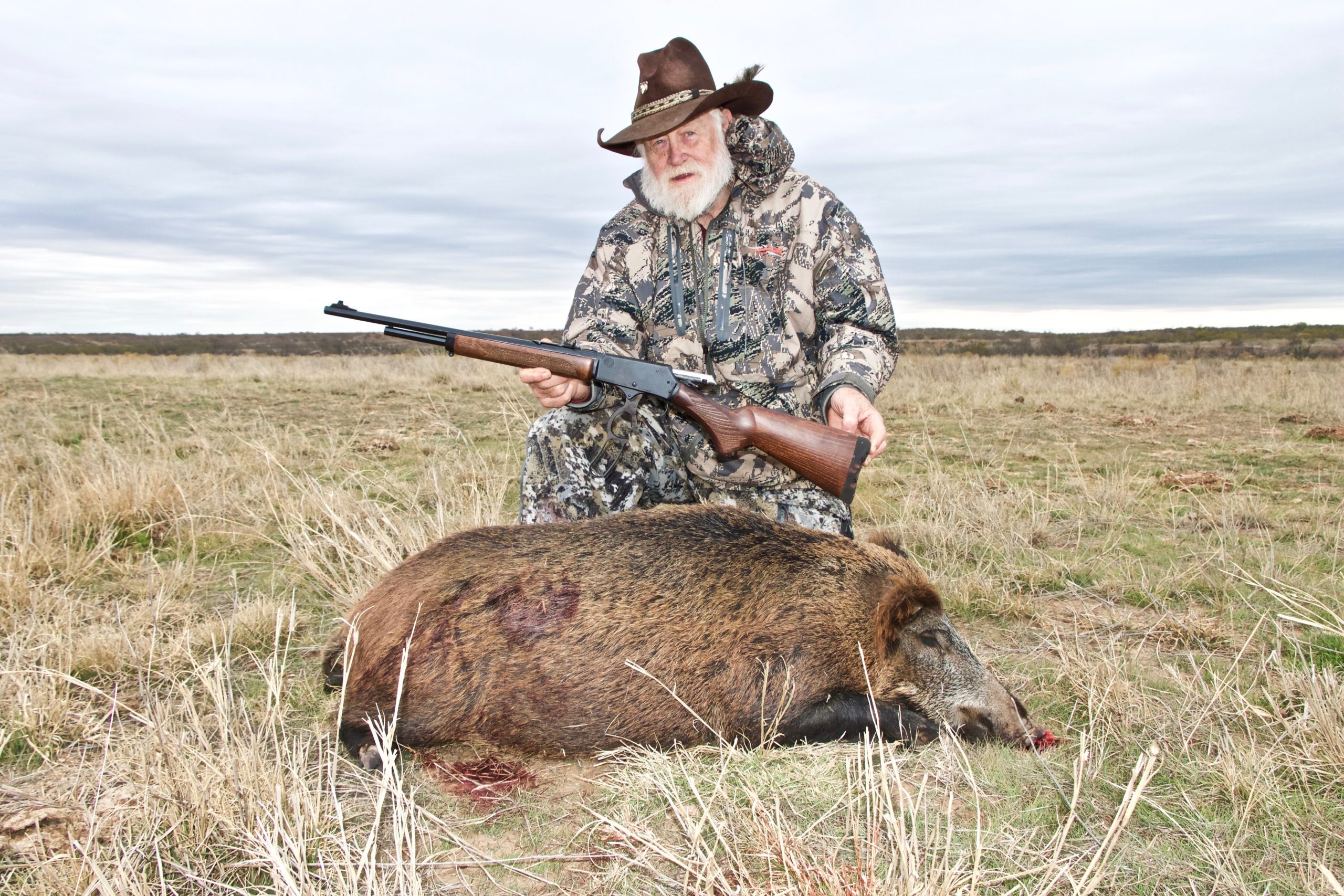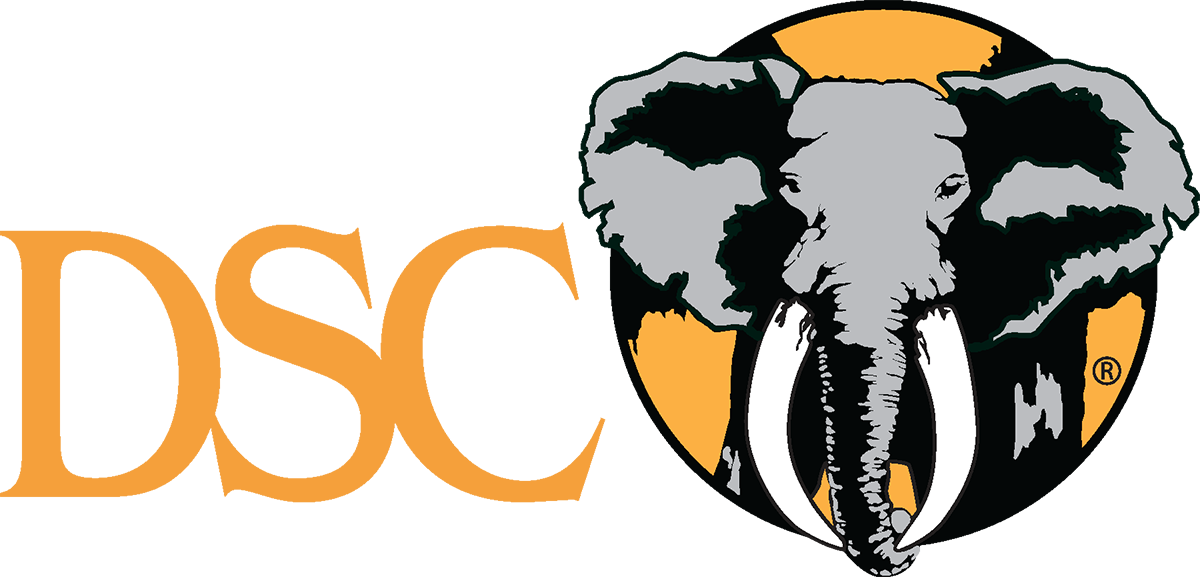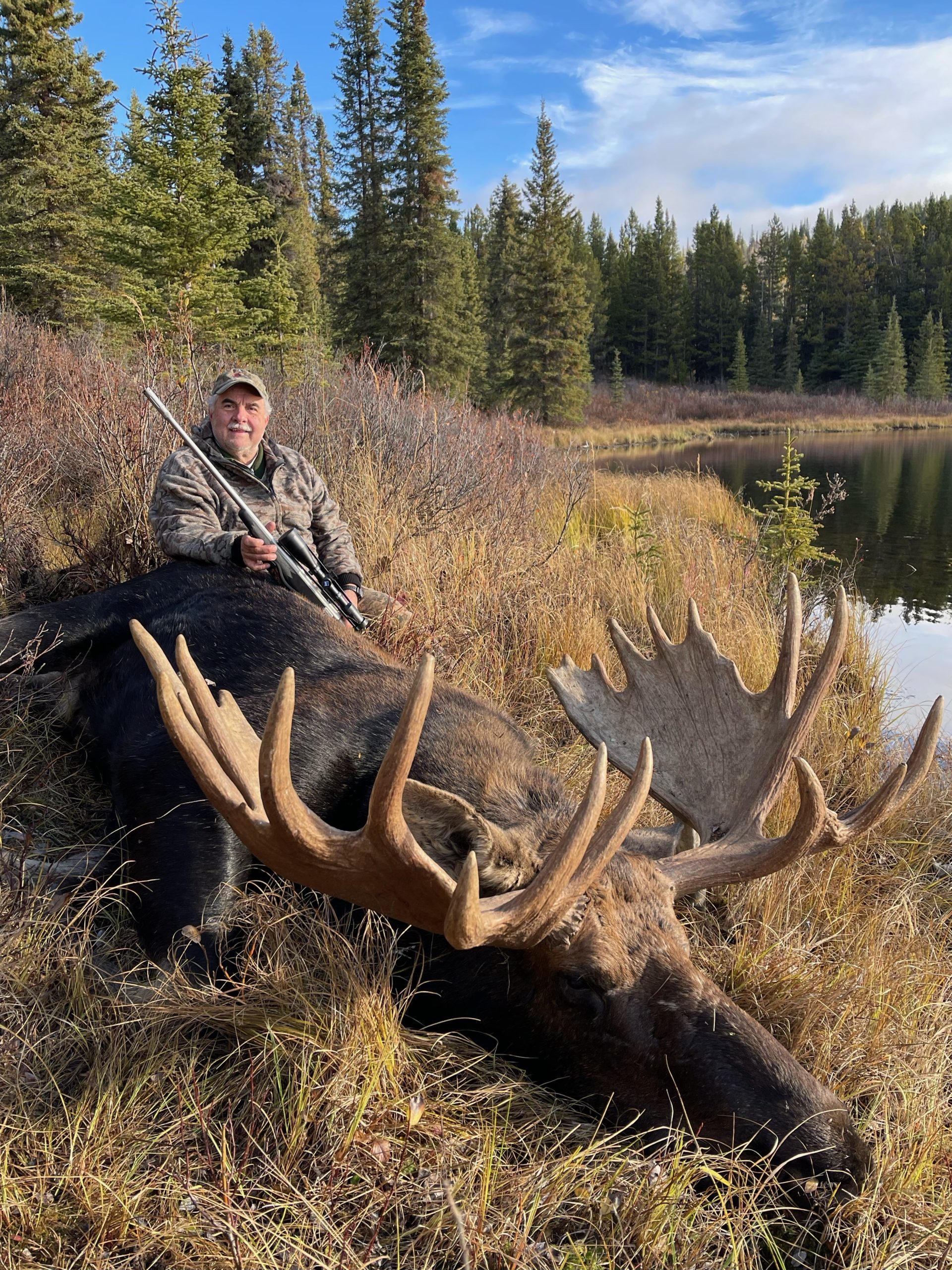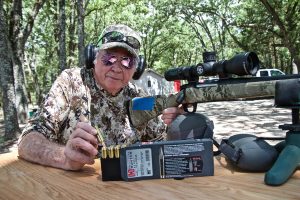 “Shoot at the 600-yard target!” instructed Joe Cunningham.
“Shoot at the 600-yard target!” instructed Joe Cunningham.
I cranked the appropriate dial up on my scope’s turret, settled into a solid shooting position, took a deep breath, let it all out, started squeezing the trigger being careful the only thing that moved on my hand was the distal portion of my right index finger where the middle portion rested on the trigger. At the shot I stayed in my shooting position, eye watching where the bullet struck the distant target. I immediately noticed the dark spot on the target about 7 inches directly to the right of bullseye.
I bolted in a second 175-grain ELD-X Hornady Precision Hunter round. “Shoot again, same hold!” said Cunningham. I followed the same “routine” as the previous shot. When I pulled the trigger, I noticed the 7mm PRC bullet had struck the target within less than an inch of my first shot, albeit a bit more to the right. Hmmmm!
“Good group started. You now what you’re doing that’s keeping you from hitting the bullseye?” asked Joe as I was ejecting the spent brass and loading a fresh third round.
I knew I had not flinched or jerked the trigger. I knew I had not too tightly held the pistol grip. There was no wind that I could detect watching the flagging hanging at 100-yard intervals all the way to the 600-yard target. I was a bit “vamboozled” trying to explain why both shots had been at right elevation of the bullseye, but both shots had landed around 6 inches to the right of bull.
“Before you squeeze off that third shot and waste more ammunition, this time pay attention to the little green light at the bottom of the scope and don’t shoot until you see it’s green! You’re sighted in at 100-yards and I’m thinking you’re canting the rifle to the right, probably about 3-degrees, which is better than most shooters who cant their rifle about 5 degrees… Remember don’t pull the trigger unless you see the green light!”
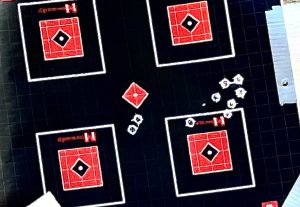 I followed my same routine, but this time paid attention to the patented green light anti-cant technology in the bottom of the scope. As I started settling into my shooting position I noticed because of the little bubble at the bottom of the scope where the green light should appear I was indeed slightly canting the rifle to the right. Now conscious of the green light I made a slight adjustment, and the green light came on. I locked into that shooting position and then gently pulled the trigger. At the shot the 600-yard bullseye on the steel turned from orange to a splattered gray as my shot landed exactly in the center.
I followed my same routine, but this time paid attention to the patented green light anti-cant technology in the bottom of the scope. As I started settling into my shooting position I noticed because of the little bubble at the bottom of the scope where the green light should appear I was indeed slightly canting the rifle to the right. Now conscious of the green light I made a slight adjustment, and the green light came on. I locked into that shooting position and then gently pulled the trigger. At the shot the 600-yard bullseye on the steel turned from orange to a splattered gray as my shot landed exactly in the center.
Behind me I could hear Joe say, “Do the same thing again before the wind comes up but this time dial up to your 800-yard zero.” I loaded another Hornady round quickly dialed up, made certain the green light was “on.” Then put pressure on the trigger. At the shot I saw the bullet hit nearly center bullseye. “Well done!” I heard Joe say. “Reload, dial up for 1000 yards and do exactly what you did before.”
I followed instruction, but just before pulling the trigger I noticed a very slight breeze, based on mirage and the flag at 1000-yards. “Favoring right edge!” I said, meaning I was holding my vertical crosshair on the right edge of the bullseye, to allow for a very slight wind from right to left, while also making certain the scope’s green light was “on”. At the shot I saw my bullet hit just to the left of the center of the 2 1/2-inch bullseye. “A slight bit more wind than I thought there might be…”
Bragging? Well maybe a little.
“Canting a bit surely does make a difference as to where the bullet strikes the target at longer ranges,” I commented as I waited for the barrel to cool before doing some more shooting. “Explains a lot!”
“It does make a lot of difference. Although shooting at 100 yards it really doesn’t, and, really with a 3-degree cant at 200 yards the bullet hits about an inch to the right of your hold, if you’re a right-hand shooter. At 400 the bullet usually hits about 3-inches right and 7-inches right at 600 yards. But at 800 yards it’s usually 13-inches and at 1,000-yards 24-inches to the right. And that’s with a 3-degree cant. Most people cant their rifles 5 degrees. If it makes that much difference with a smaller cant, imagine what happens if you cant your rifle 5 degrees,” commented Joe.
“According to Doc (Dr. John McCall, who designed optics for and owns Stealth Vision) the human eye when leaned slightly to peer down a rifle scope, wants to instinctively cant the rifle to make the vertical crosshair look like it’s straight up and down. The muscles controlling the eye cause it to do so. But as you saw if the crosshairs are indeed canted to the right, the bullet will strike the target to the right.” Stated Joe, who works very closely with Dr. McCall and Stealth Vision.
“The importance of canting is not really anything new. Several rifle makers and optic companies have known about it for years, but the effects became considerably more obvious and important as shooters started shooting at targets beyond 400 yards out to 1,000 and more yards. That’s why a lot of other scope companies suggest using a “flip-over” external level on their scopes. These do work. But you really can’t see both the external level and the crosshairs at the same time and quite often when you move from looking at the outside level to the crosshairs you just might cant the rifle again. What Doc did is take what he’s learned about the human eye, as a preeminent human eye surgeon, and years of practical long-range shooting to create the patented internal green light anti-canting system. Makes not canting really easy, you simply don’t pull the trigger until the green light comes on. But there is also a small “bubble level” at the bottom of the scope if you do not have the light turned on. Pretty simple when you think about it, but also something no one had previously done. It’s one of the numerous things that sets Stealth Vision scopes apart from all the rest.” Joe continued, “I should add we do not send out a scope unless it has been trued, meaning our turret adjustments really work as they are designed to. We also do custom turrets. Our scopes are initially calibrated for a 1,000 to 1,500-feet elevation. But if you go on a hunt say at 5,000 or 8,000 or even 10,000 feet elevation we will custom design a turret for your rifle and your ammunition. Once you get the custom turret cap, all you have to do is crank the turret back to the zero stop, remove the existing turret cap and replace it with the customized turret cap. Then when you get to where you’re going to hunt simply double check your zero. Back home hunting at 1,000-feet elevation just replace the turret with the original one. We have some customers who have us do three or four turret caps and then switch them out according to what elevations they are hunting.”
“Didn’t you tell me you were going Coues deer hunting in Durango right after the DSC Convention in Atlanta in January?” asked Joe.
“Yes Sir, I’ll be hunting with my Mossberg Patriot Predator chambered in 6.5 PRC. It’s topped with a Stealth Vision SVT 3-18×44 scope and I’m shooting Hornady’s Precision Hunter 143-grain ELD-X. According to the outfitter we’ll be hunting at 8,500-feet elevation.
“I’ve got the information on that rifle, scope and ammunition from when we initially set it up. We’ll do a custom turret utilizing a 200-yard zero. If you do need to take a longer shot, you will be ready to do so at 8,500 or so feet elevation. But remember if you’re going to be shoot beyond 300 yards you don’t pull the trigger before you see the green!”

